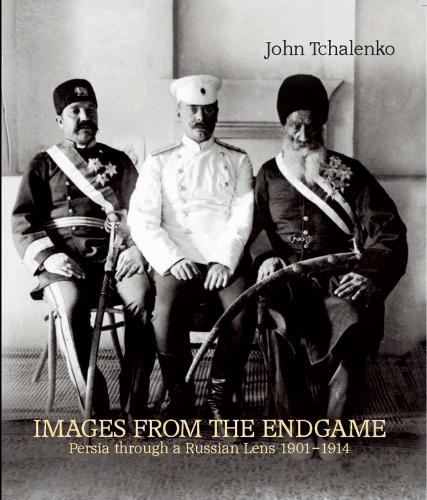
Images from the Endgame: Persia Through a Russian Lens 1901-1914
(Paperback)
Publishing Details
Images from the Endgame: Persia Through a Russian Lens 1901-1914
By (Author) John Tchalenko
Saqi Books
Saqi Books
22nd November 2006
United Kingdom
Classifications
General
Non Fiction
Photographs: collections
955.051
Physical Properties
Paperback
264
Width 240mm, Height 340mm, Spine 20mm
1410g
Description
On 11 August 1913, the Tsar's consul in Persia, and officer in the Lithuanian Regiment, Alexander Iyas, photographed Mamed Amin-agha, head of the Kurdish Piran tribe, in front of a wall of fierce-looking warriors from Baiz-pasha's Mangur tribe. The photographer was thus marking a reconciliation he had successfully negotiated between the two warring tribes. 15 months later, in December 1914, Iyas was assassinated and beheaded by these tribesmen allied with Turkish troops. By an extraordinary series of coincidences, the negatives were recovered on the body of a Turkish officer killed by the Russians during the battle near Tabriz in January 1915. Such are the ironies of the Eastern Front of the First World War. The officer-photographer had arrived in Persia in 1901, in the small town of Turbat-i Haydari near the Afghan border. He was armed with several cameras, including the remarkable Kodak Panoram taking wide-angle images of 150degree. Throughout his years in Persia, he documented the places, people, and events he encountered with some remarkable photographs, providing us with a rare Russian point of view of the Great Game - the rivalry between Britain and Russia for the domination of Central Asia. This is a unique and hitherto unknown group of images of a region, and a time for which no other comprehensive collection exists.
Author Bio
John Tchalenko travelled extensively in Iran as an earthquake geologist, where he first came across the traces of Alexander Iyas. On researching Foreign Office archives he discovered that Iyas had been his great-uncle. Tchalenko is currently Reader in Drawing and Cognition at the University of the Arts, London.
